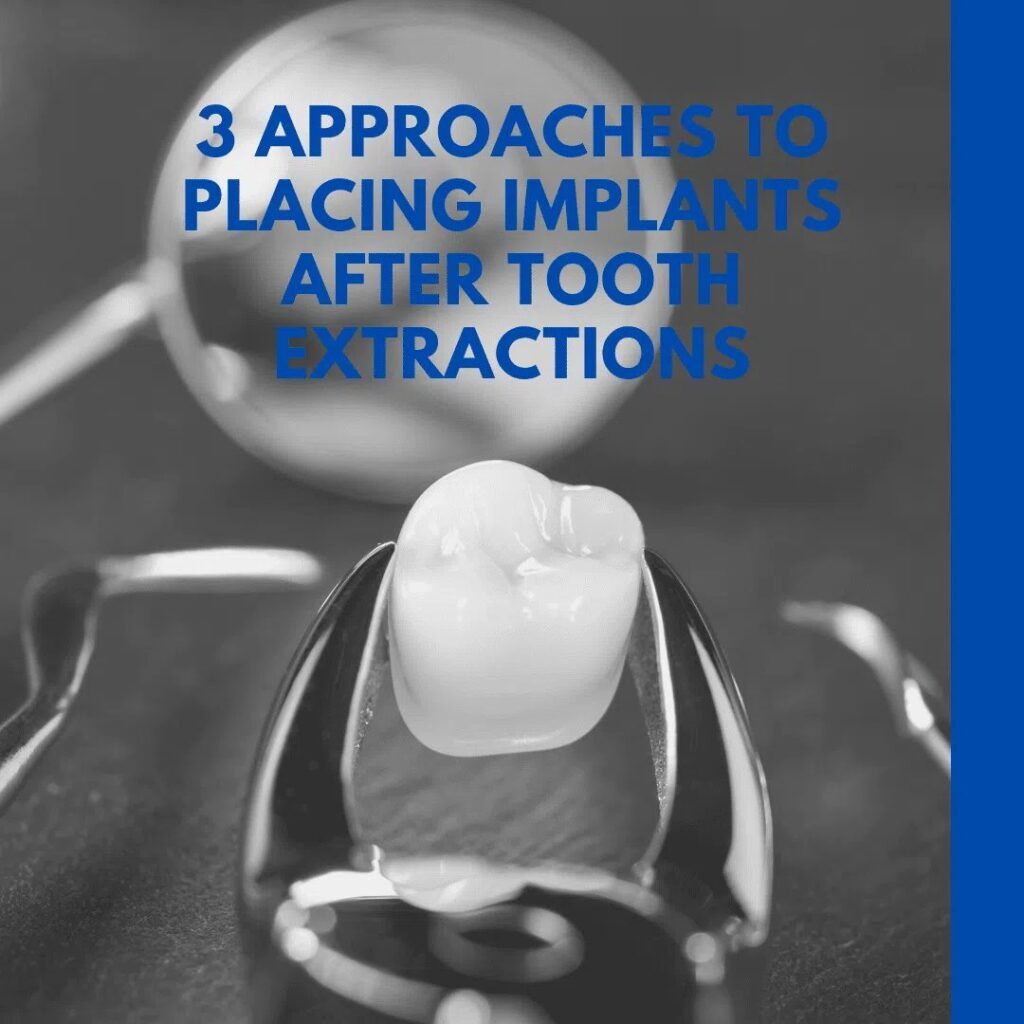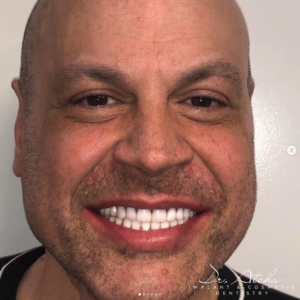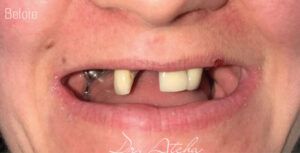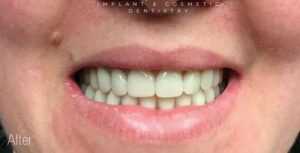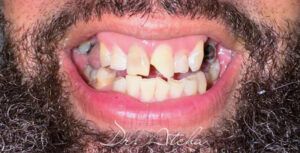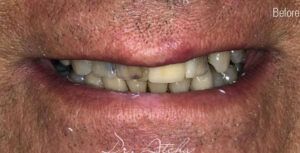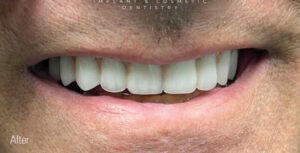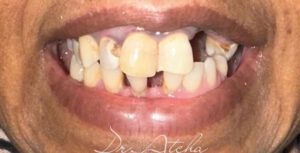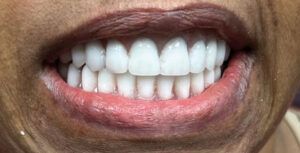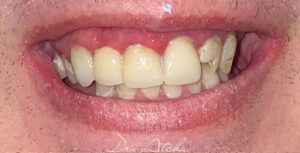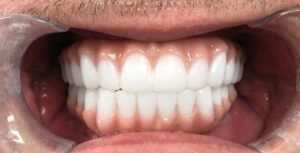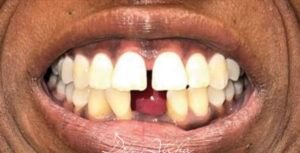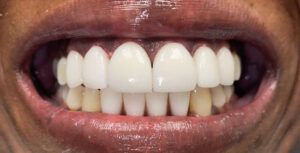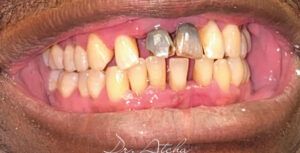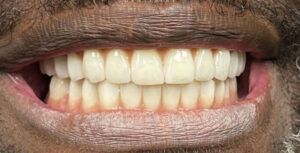Many people wait until they have missing teeth before they start shopping around for tooth replacement options, such as dental implants. However, you don’t have to wait until your teeth are missing before you consider dental implants. In fact, there are some cases where your dentist may recommend having certain teeth extracted in order to improve your oral health. These extracted teeth can then be replaced with dental implants.
While the goal is always to preserve your natural teeth first, there are certain cases where your natural teeth may pose too large a threat to your oral health. In these cases, an extraction is generally recommended. Your dentist may recommend having a tooth extraction if:
- One or more teeth are severely decayed and are unable to be adequately restored using other methods
- One or more teeth are severely damaged and are unable to be adequately restored using other methods
- You have too many teeth for the size of your jaws
- Severe periodontal disease has caused deterioration in the support structures around the tooth, allowing the tooth to become loose
Nowadays, tooth extractions are not as horrendous as one would think. In fact, they are relatively routine procedures that can be completed quickly and without patient discomfort. Thanks to dental sedation, you may not even be aware that the extraction is happening, nor will you remember the procedure afterwards. During your extraction procedure, there are two different types of techniques that your dentist may use:
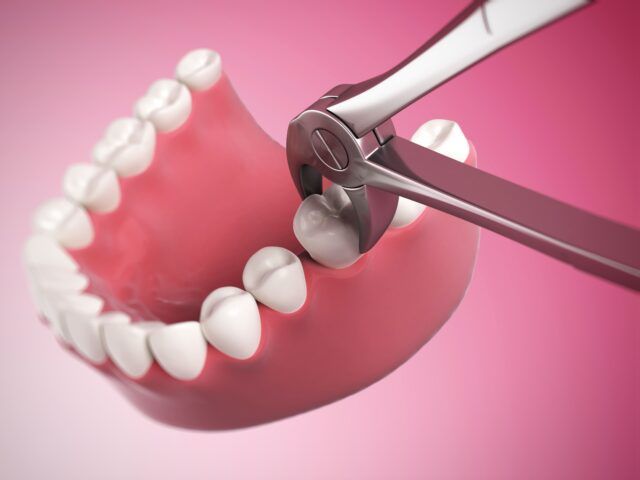
Simple Extraction Technique
A simple extraction technique consists of your dentist using forceps and an elevator tool to slowly loosen and lift the tooth out of the socket. Simple extraction techniques are generally used in cases where the entire tooth can be extracted as one piece. Simple extractions can usually be performed using local anesthesia.
Surgical Extraction Technique
A surgical extraction technique consists of your dentist making an incision in the gums and/or splitting the affected tooth into multiple pieces before removing them one piece at a time. Surgical extractions are generally performed when the tooth cannot safely be removed in a single piece. Splitting the tooth into smaller pieces actually minimizes the amount of trauma exerted on the surrounding tissue and promotes faster healing. However, since they are slightly more involved, surgical extractions usually require general anesthesia.
After the affected tooth or teeth have been extracted from the mouth, your dentist can place your dental implants. The total number of teeth extracted will determine how many dental implants need to be placed. For example, a single extracted tooth will be replaced with a single dental implant, whereas multiple extractions may require two implants for a dental bridge or 4-6 implants for an implant-supported denture.
When it comes to placing dental implants after a tooth extraction, there are three different approaches that your dentist can utilize. Although there are a few different factors that can affect which approach is best, the most important one is how much bone mass your jaw has at the time of the extraction. This is because dental implants must be able to fuse, or osseointegrate, with the surrounding bone in order to be successful. An implant that fails to fuse with the surrounding bone will not be properly anchored and will not be able to support a dental prosthetic.
Before starting the process of extracting and replacing your teeth with dental implants, your dentist will determine which of these three approaches would work best for your individual case. This is done by taking a detailed 3-D scan of your jaw that shows how much bone mass is present. These scans are used in coordination with specialized dental implant software that tells your dentist exactly where and at what angle to place your implants. Depending on the findings from the scan and proposed placement, your dentist may choose to use one of the following approaches:
Immediate Post-Extraction Implant Placement
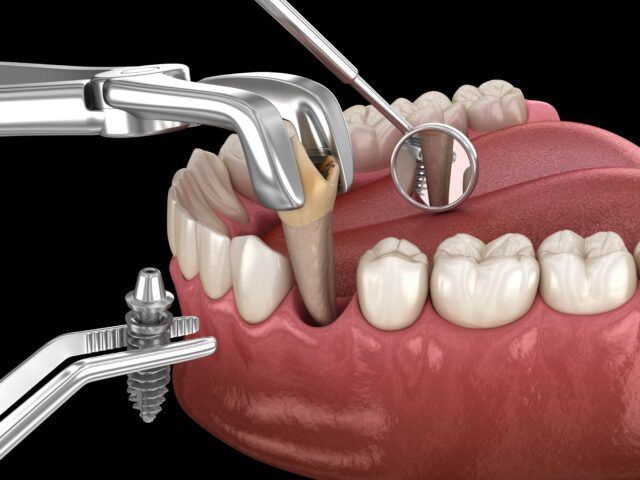
Just as the name suggests, immediate post-extraction implant placement means that your dental implants are placed immediately after the affected teeth are extracted. In these cases, both the extraction and implant placement can be combined into a single procedure. Although most people prefer this approach, it can only be safely executed if you have enough bone mass to support the implant at the time of the extraction. Immediate implants also work best when used on the incisors, canines, or premolars since they only have a single root. This ultimately means that not everyone is an ideal candidate for immediate post-extraction implant placement.
Delayed Immediate Post-Extraction Implant Placement
Next to having your implants placed immediately after having your teeth extracted, you can also have them placed soon after your extraction. This is known as delayed immediate post-extraction implant placement and it generally refers to implants that are placed anywhere within 2 weeks to 3 months of the extraction procedure. This approach allows for the gums and bone around the extraction site to heal before the implants are placed. It also allows time for any lingering infections to heal, such as those caused by tooth decay or gum disease. Your dentist may also recommend this approach if you are getting a dental implant to replace a molar, since they have more than one root. However, the implants should be placed before the 3 month mark in order to minimize bone resorption after the extraction.
Late Implantation
The final approach used to place implants after an extraction is the late implantation approach. This approach is generally used when there is not enough bone mass present to support an implant at the time of the extraction. When not enough bone mass is present, supplemental procedures like a bone graft or sinus lift may need to be performed to build up the bone before the implants can be placed. In these cases, bone grafting procedures are usually performed after the tooth extraction and then allowed to heal. In most cases, it takes about 3-6 months for new bone to form. This means that the implants are usually placed around 3-6 months after the extraction once there is enough bone present to support them.

